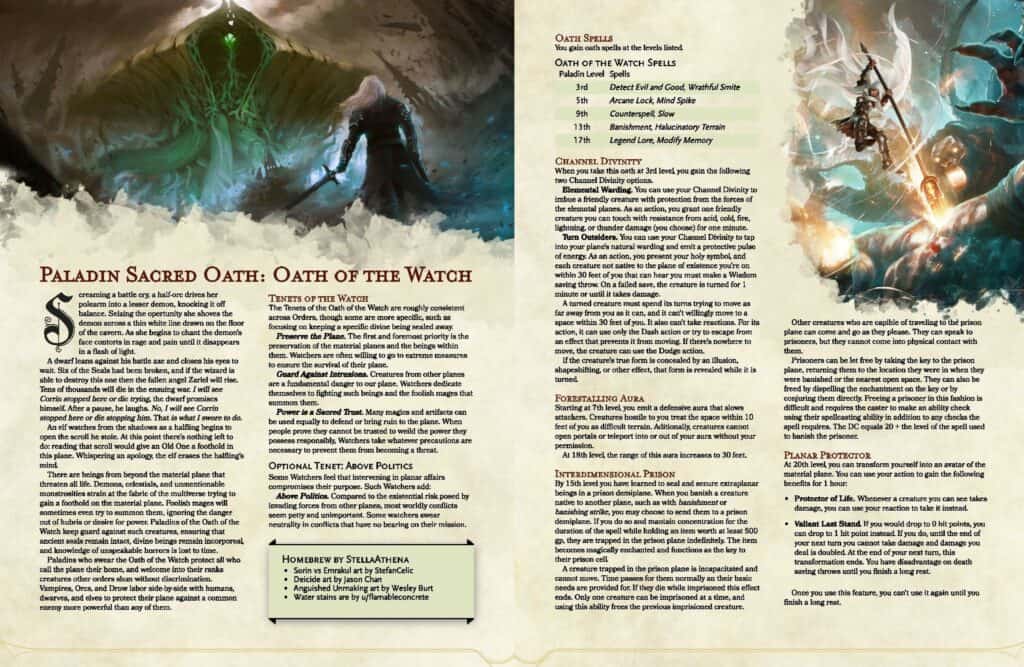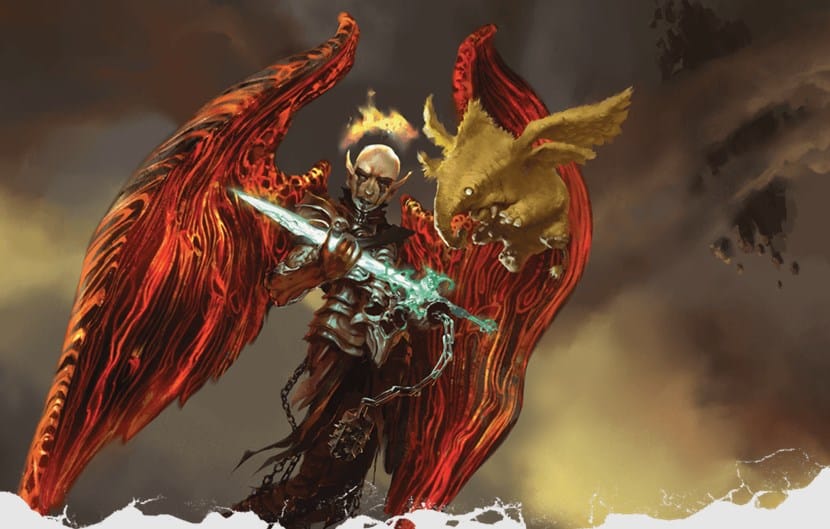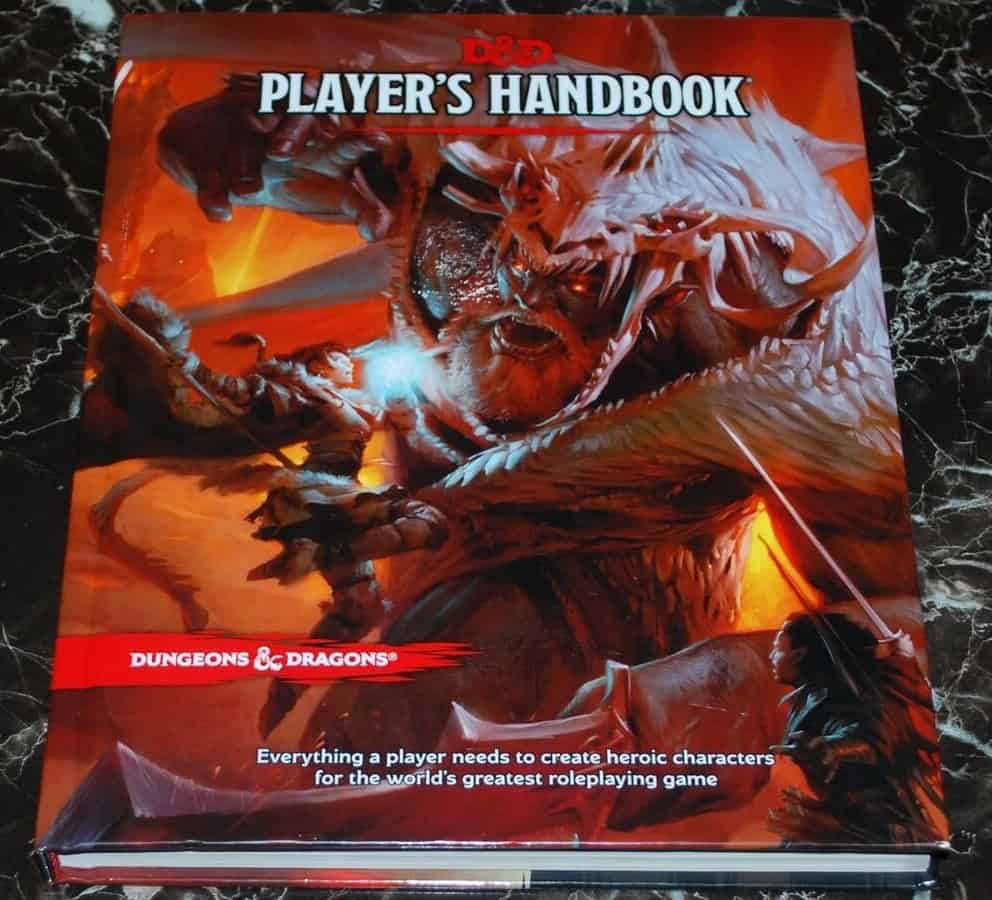If you’re wondering how to play a Paladin in D&D 5e, you’ve come to the right place. These holy warriors are the ultimate combination of devotion and destruction. As a Paladin, you’ll get a taste of the Fighter’s combat skills with a dose of the Cleric’s spellcasting abilities.
In this guide for Paladins 5e, we’ll go over how to create a Paladin, offer useful info for playing a Paladin in 5e, and answer some common questions about playing Paladins. The full description of Paladins and their abilities can be found in the Dungeons & Dragons Player’s Handbook. In this Paladin 5e guide, we’ll stick to the core aspects of Paladins. Here’s what we’ll cover:
- What are Paladins in 5e?
- How to create a Paladin
- What is the Paladin Sacred Oath?
- What are Paladin spells in 5e?
- Frequently Asked Questions
What are Paladins in 5e?
Let’s set the scene. You and your party are surrounded by enemies. The darkness of the dungeon feels oppressive as menacing faces close in. Towering over you and clad in glistening plate mail is the paladin. She swings her blade and the blood-curdling screams of your enemies soon follow. But then you hear a cry of pain from one of your companions. He lies on the floor in agony. The paladin turns and rushes to him. Dazzling light emits from her hands as she lays them on her wounded friend and moments later he is healed and ready to join the action again.
Paladins are devout warriors who use their weapons and their divine magic to defeat the forces of evil. The most important thing to remember about Paladins is that they have a cause. Whilst fighters might be fighting for gold, glory, or simply for the sake of it, Paladins are united by a divine mission to smite their enemies and protect those in need.
Paladins have fighting and spellcasting abilities. As fighters, they are often skilled with large, two-handed melee weapons and very protective of their companions. As spellcasters, they meditate, draw on divine inspiration, and use their Charisma to use the same spells as Clerics.
Read our full guide on D&D Weapons.
How to create a Paladin

The first step in creating a Paladin in 5e is to figure out what their holy mission is. You should begin by asking yourself, what is my Paladin’s holy quest? Is she a virtuous warrior of light, determined to defend the weak and destroy evil wherever she goes? Or is he a religious fanatic who will act according to his sacred laws no matter the consequence? Whatever your Paladin’s calling is, remember it will be the thing driving all your choices.
Most Paladins worship one or more deities. Dungeons & Dragons have an official pantheon of gods and goddesses to choose from. But you could also invent your own. Usually, Paladins worship lawful and/or good deities. The qualities of your chosen deity could influence your Paladin’s holy quest and even their personality traits.
Paladin statistics
A Paladin’s primary stat is Strength, followed by Charisma. If you want to play a Paladin in 5e, Strength and Charisma should be your highest stats. It also helps if you have a high Constitution.
Paladin characteristics
- How many hit points do Paladins get?
At 1st level, your Paladin will get 10 hit points plus their Constitution modifier. After 1st level, you’ll get your Constitution modifier plus 1d10 per level. - What armor can Paladins wear?
Paladins can wear any armor and can carry shields. - What weapons can Paladins use?
Paladins can use simple weapons (clubs and maces) and martial weapons (swords and axes). Paladins are best using melee weapons. Paladins can use ranged weapons, but it is not recommended. - What saving throws are Paladins proficient in?
Wisdom and Charisma. This means that if your Dungeon Master asks you to do a saving throw (such as when you’re trying to resist a spell or avoid a trap), you can add your Wisdom or Charisma modifier to your roll. - What skills do Paladins have?
When creating a Paladin, you can choose two special skills. You can choose from Athletics, Insight, Intimidation, Medicine, Persuasion, or Religion. Have a think about your Paladin’s character and background and base your choices on this. For example, a devout and charismatic Paladin might choose Persuasion and Religion as his special skills. - What equipment do Paladins start with?
All D&D 5e classes have specific starting equipment. Paladins start with a martial weapon and a shield OR two martial; five javelins OR any simple melee weapon, a priest’s pack OR an explorer’s pack, and chain mail and a holy symbol.
What special abilities do Paladins have?
In addition to their other skills, Paladins start with two special abilities.
Divine Sense
What is Divine Sense you ask? Paladins’ hatred of pure evil means they can often sense it. Likewise, they can also sense powerful good forces nearby. Paladins can use Divine Sense as an action to detect celestial, fiend, or undead beings within 60ft.
Lay on Hands
The second special ability that Paladins have is Lay on Hands. Paladins have a pool of divine power in them that can be used to heal wounds. The Paladin’s pool can restore hit points up to their current level x5. The pool can also be used to cure diseases. Your pool will replenish after a long rest.
Leveled up abilities
As Paladins advance, they will gain more special abilities. These include Divine Smite, Divine Health, Aura of Protection, and Aura of Courage. Check out the Dungeons & Dragons Player’s Handbook for the full details.
What is the Paladin Sacred Oath?

At the 3rd level, Paladins take a Sacred Oath. This commits your character to the holy quest they are on as well as giving them special Oath Spells. Even though this doesn’t happen until 3rd level, it’s helpful to know what your Sacred Oath will be when you first create your character.
There are three Sacred Oaths to choose from in 5e. Though many Dungeon Masters allow other Sacred Oaths, including homebrew Sacred Oaths. Your choice will depend on your Paladin’s divine calling and background. Each oath has specific tenets, spells, and abilities.
Oath of Devotion
The Oath of Devotion is a great choice for beginner D&D players. Paladins who take the Oath of Devotion are sometimes known as holy warriors or white knights. They are committed to the highest ideals of justice and virtue. If your Paladin is Lawful Good and/or worships a Lawful Good deity, they will most likely take the Oath of Devotion.
What are the tenets of the Oath of Devotion?
The tenets of the Oath of Devotion are rooted in justice, virtue, and order. These are:
- Honesty: You cannot lie or cheat
- Courage: You are never too afraid to act
- Compassion: You help others, show mercy, and protect those who cannot protect themselves
- Honor: You treat all fairly and do as much good as possible
- Duty: You feel a strong sense of duty to those you protect and those you follow
What are the Oath of Devotion spells?
Every few levels, Paladins get new spells based on their oath. At lower levels, you can cast protection from evil and good, sanctuary, lesser restoration, and zone of truth. At higher levels, you’ll be able to cast a beacon of hope, dispel magic, freedom of movement, guardian of faith, commune, and flame strike.
Other Oath of Devotion abilities
The Oath of Devotion offers several other abilities depending on your level.
- Channel Divinity: At 3rd level, Paladins who take the Oath of Devotion can channel divinity through two options:
- Sacred Weapon: Add your Charisma modifier to your weapon’s attack rolls. The weapon will also emit a bright light and become magical (useful against monsters who only take damage from magical weapons).Turn Undead: Hold up your Holy Symbol and chant a prayer. Undead enemies who fail a Wisdom saving throw will run away from you for one minute or until hit.
- Aura of Devotion: At 7th level, you can make yourself and friendly creatures within 10ft of you immune from charm spells.
- Purity of Spirit: At 15th level, you always receive the effect of the protection from evil and good spell.
- Holy Spirit: At 20th level, you can emit a radiant light for one minute and 30ft around you, causing 10 radiant damage to enemies within it.
Oath of the Ancients

The Oath of the Ancients is connected to nature, the Fey, and the eternal struggle between light and darkness. Paladins who take the Oath of the Ancients do so because they love the world and all living things on it and they are committed to protecting life and beauty. They are often called fey knights, green knights, or horned knights.
What are the tenets of the Oath of the Ancients?
The tenets of the Oath of the Ancients reflect the Paladin’s commitment to light over dark. These are:
- Kindle the Light: You always try to kindle a light of hope in the world through mercy and kindness.
- Shelter the Light: You protect goodness and beauty in the world.
- Preserve Your Own Light: Delight in the beauty of the world.
- Be the Light: Let your love of the world be an inspiration for all around you.
What are the Oath of the Ancients spells?
If you take the Oath of the Ancients, at lower levels you can cast ensnaring strike, speak with animals, moonbeam, and misty step. As your level increases, you will eventually be able to cast plant growth, protection from energy, ice storm, stoneskin, commune with nature, and tree stride.
Other Oath of the Ancients abilities
Like the other Sacred Oaths, the Oath of the Ancients will grant you special abilities at certain levels.
- Channel Divinity: 3rd level Paladins who choose the Oath of the Ancients gains two ways to channel divinity:
- Nature’s Wrath: You can cause vines to spring up and trap an enemy.
- Turn the Faithless: You can force fey or fiends to run away from you in fear.
- Aura of Warding: At 7th level, you and your friends nearby are resistant to damage from spells.
- Undying Sentinel: At the 15th level, once between long rests, if you are reduced to 0 hit points you are reduced to 1 instead.
- Elder Champion: At the 20th level, you can transform into a divine force of nature. This can be used to regain 10 hit points, cast a Paladin spell as a bonus action, or give nearby enemies a disadvantage on their saving throws against your spells and abilities.
Oath of Vengeance
A Paladin who takes the Oath of Vengeance has an unwavering commitment to punishing evil beings. Vengeful Paladins will be enraged at evil and violent acts – and their response may be extreme. Some call these Paladins dark knights or avengers.
What are the tenets of the Oath of Vengeance?
The tenets of the Oath of Vengeance are the most different from the other Sacred Oaths. Unlike the Oath of Devotion or the Oath of the Ancients, they often lack mercy and forgiveness. Instead, they are rooted in cruel vengeance against those who have committed sins. The tenets of the Oath of the Ancients are:
- Fight the Greater Evil: You will always attack the greater evil in a scene rather than lesser evils.
- No Mercy for the Wicked: You never show mercy to your true enemies, but you may be merciful towards inconsequential foes.
- By Any Means Necessary: You care little about consequences or morals outside of your search for vengeance.
- Restitution: You help those who are harmed by your enemies.
What is the Oath of Vengeance spells?

The Oath of Vengeance also comes with its own spells. At lower levels, you can cast bane, hunter’s mark, hold person, and misty step. When you reach those higher levels, you’ll be able to cast haste, protection from energy, banishment, dimension door, hold monster, and scrying.
Other Oath of Vengeance abilities
As you level up, your Oath of Vengeance will give you special abilities. These are:
- Channel Divinity: Like the other Sacred Oaths, at the 3rd level, you will be able to channel divinity. If you take the Oath of Vengeance, you gain the following abilities:
- Abjure Enemy: You choose one enemy within 60ft to frighten, causing it to freeze in fear where it stands.
- Vow of Enmity: Gain an advantage on your attacks against one nearby enemy.
- Relentless Avenger: At the 7th level, after attacking an enemy you can also move at half your speed afterward. This helps you stop enemies from fleeing.
- Soul of Vengeance: At 15th level, if you use your Vow of Enmity on an opponent, you can make an extra attack on that enemy.
- Avenging Angel: At 20th level, you can transform into a winged avenger for one hour. You will grow wings and be able to fly and enemies will run in fear from you.
What are the Paladin spells in 5e?

Paladins have access to many of the same spells as Clerics. Unlike Clerics, however, Paladins use Charisma to cast their spells. This means when a spell refers to your spellcasting ability, you use your Charisma modifiers.
Paladins can cast spells from the 2nd level and, like other spellcasters, have a set amount of spell slots per level that are replenished after a long rest. The full descriptions of Paladin spells can be found in the Dungeons & Dragons Player’s Handbook, but we’ll cover some of them here.
At 2nd level, Paladins have two levels 1 spell slots. This means on any given mission they can bring two level 1 spell. The best Paladin spells at level 1 are:
- Bless: Up to three creatures near you can add 1d4 to their next attack roll or saving throw.
- Cure wounds: Touch a creature to heal them 1d8 plus your Charisma modifier worth of hit points.
- Protection from evil and good: Touch a creature and they are protected against certain types of creatures. These creatures have disadvantage on attacks and cannot charm, frighten, or possess your target.
As Paladins level up, they gain more spell slots and can access higher level spells. A high-level Paladin will be able to cast powerful spells like banishing smite, which gives your weapon 5d10 force damage on your opponent, or even raise the dead, allowing you to bring your companions back to life.
Frequently Asked Questions
Question: What race should I choose for a Paladin?
Answer: Choosing a race for your Paladin should be linked to any racial stat bonuses that compliment Paladin stats. So if you’re wondering what the best race for Paladins in 5e is, remember that Paladins’ prime stats are Strength and Charisma. Dragonborn get a bonus for their Strength and Charisma, so Dragonborns make excellent Paladins. Half-Elves and Humans also work well as Paladins.
Question: What background should I choose for a Paladin?
Answer: The Dungeons & Dragons Player’s Handbook offers several ready-made backgrounds that work well for Paladins. Given Paladins’ holy calling, Acolyte and Hermit are good backgrounds for Paladins. A Paladin could also be a Folk Hero or a Noble Knight.
Question: Are Paladins good at 1st level?
Answer: Paladins have moderate power at 1st level. They have a good number of hit points and a strong attack, though not as strong as a Fighter. But you’ll have to wait till 2nd level to get spells and 3rd level to take your Sacred Oath. Paladins are especially powerful between 2nd and 5th level.
- Best Alternatives to Dungeons & Dragons - August 23, 2023
- Wyverns 5e Guide: The Chickens of the Dragon Family - September 5, 2022
- Best DnD Dice Tray Ideas for Players and DMs - August 22, 2022

